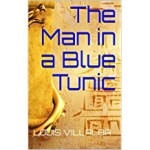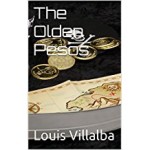
This Thanksgiving, I visited Antigua, Guatemala, and its surroundings in the heart of that country. What I saw changed my perception of Spanish colonization in America. This little town contains vital evidence of what the Spaniards achieved in America. In 1979, UNESCO named it World Heritage Site because it “retained the integrity of its 16th-century layout and the physical integrity of most of its built heritage.” It lies in the middle of a lush valley at the feet of three volcanos. One still sends intermittent plumes of smoke into the air and rivulets of lava down its slope.
In 1527, Spaniards founded Antigua—the ancient capital of Guatemala—designing its horizontal and vertical streets as a perfect checkerboard and paving them with cobblestones. In its center sat an expansive plaza with a lovely fountain and a gorgeous colonial cathedral that presided over the place. Two large two-story government buildings with arcades and colonnades stretched along opposite sides of the square. Sprinkled through the town were numerous outstanding churches, convents, monasteries, and even a university whose advanced teachings were ranked equal to that of Salamanca, one of Europe’s most excellent centers of studies. Unfortunately, two earthquakes in the 1700s destroyed quite a few buildings, prompting the government to move the town to where Guatemala City lies nowadays. Antigua was abandoned as it was, preserving its Baroque monumental complex—cobblestone streets, intact and damaged buildings, and numerous ruins.
Some people trickled back into the area but never changed its appearance, safeguarding the interior and exterior of the ancient buildings, streets, and ruins. Among them, one caught my attention: the ex-Convent of Our Lady of de Pillar. This edifice, which had housed the nuns, survived the earthquakes. But its attached church stood with two damaged cupulas and bare interior walls because its altars were stripped off. Finally, by order of the King of Spain, these art pieces ended up in the newly built convent in Guatemala City, where the nuns continued their prayers and teachings.
As layers of earth had guarded dinosaur bones, perennial snow intact mammoths, or the Vesuvius’ ashes the city of Pompeii, mother nature has kept Antigua as an irrevocable proof of the truth about the Spanish colonization in America. Under the monarchy’s control, the state and the church sent armies of soldiers and priests to accomplish an enormous task. Sovereigns made sure Christian crosses controlled the sword-wielding hand of the conquistadors. Yet, the annexation of the continent was not peaceful. In this area, indigenous uprisings prevented a previous attempt to locate the capital of Guatemala in a different place. Ongoing black legends still strive to rewrite history and besmirch Spain’s memory in Hispanic America. I talked to an indigenous gentleman who sold tickets in a museum’s reception area. I asked him whether he had heard his parents or grandparents talk about Spanish dealings with his Indian ancestors. He replied,
“Here, when someone makes a bad business decision, we tell him, ‘You are like the old Indians who traded gold for mirrors.'”
“Did the Spaniards abuse your ancestors?” I asked.
“Yes,” he said without rancor, with an expression of resignation and regret as if his answer was drawn out with a screwdriver.
“Did they slave them?”
“Yes.” This time, a sigh and a grimace of uneasiness preceded his response.
Above his desk, a notice showed foreigners should pay 50 quetzals and nationals 20 to enter the museum. I handed him 50, but later I checked the ticket, which read 20. I guessed the clerk had behaved like many people who abused others if they could get away with it.


































